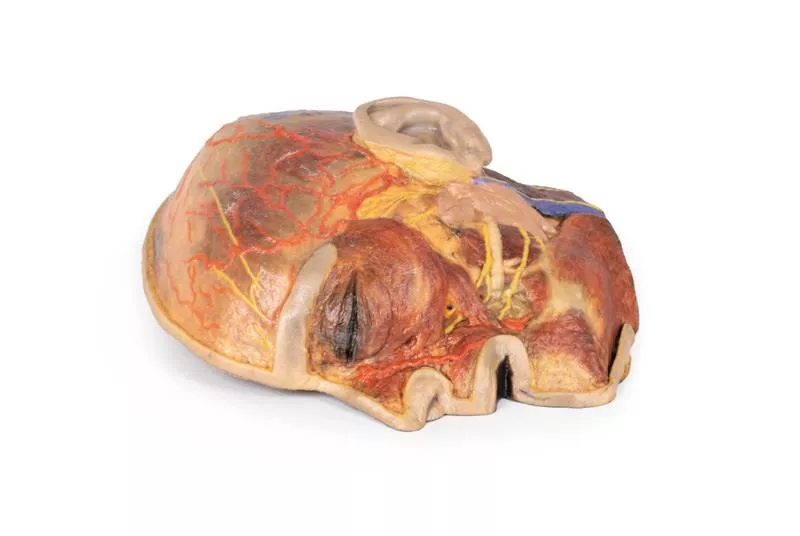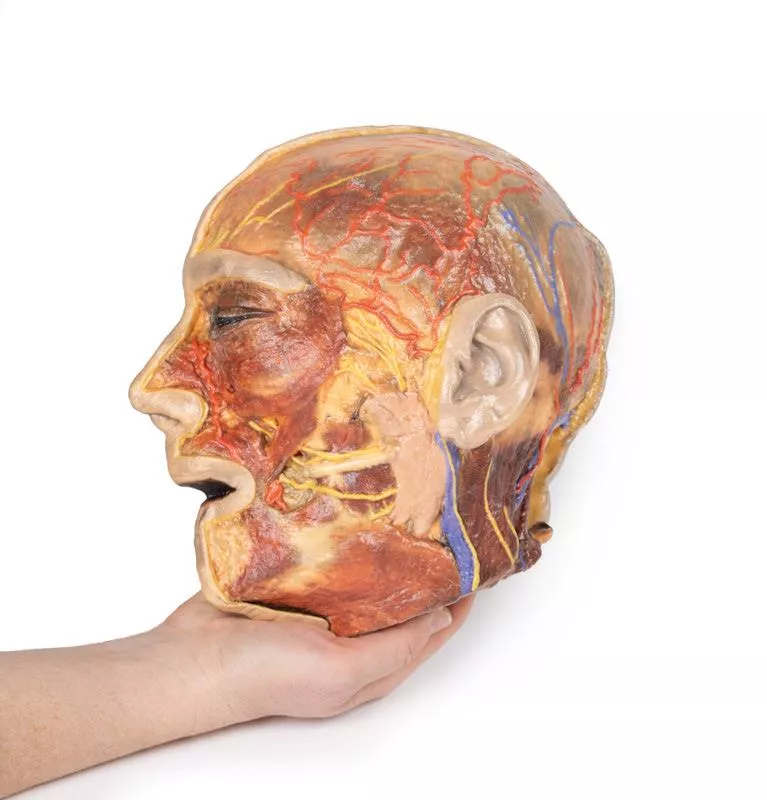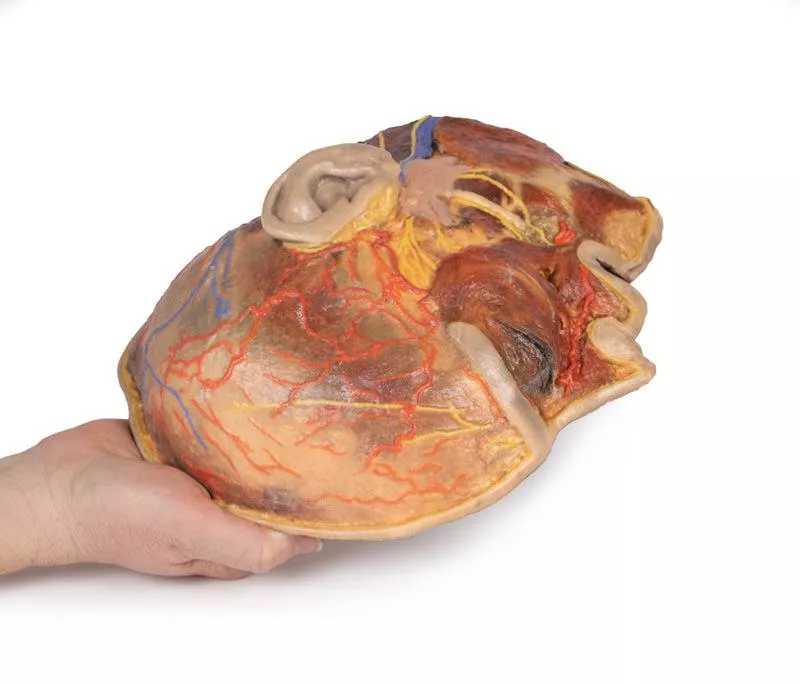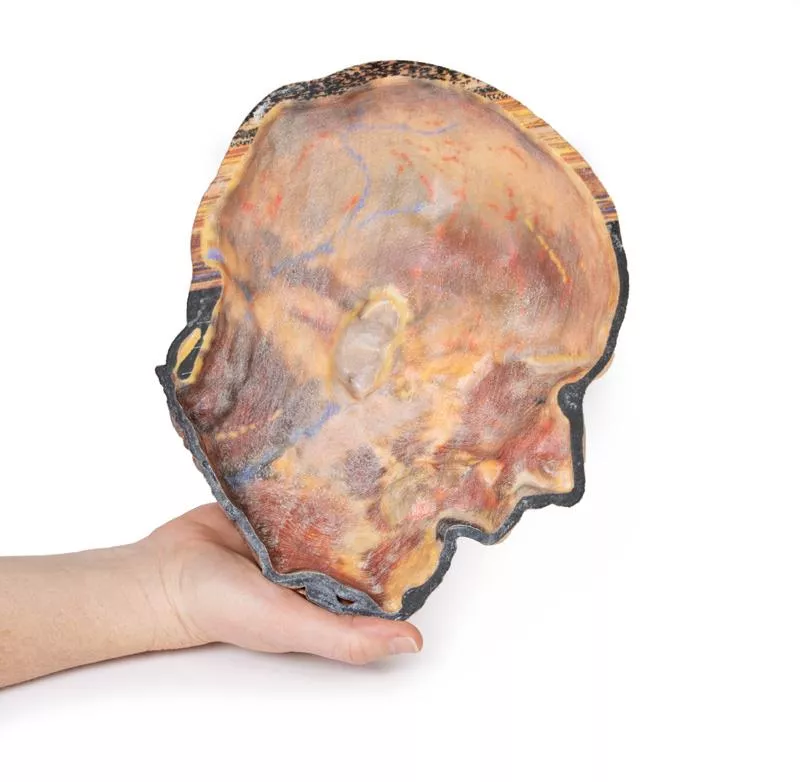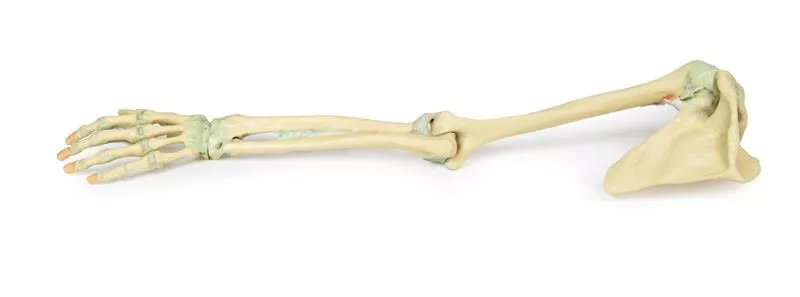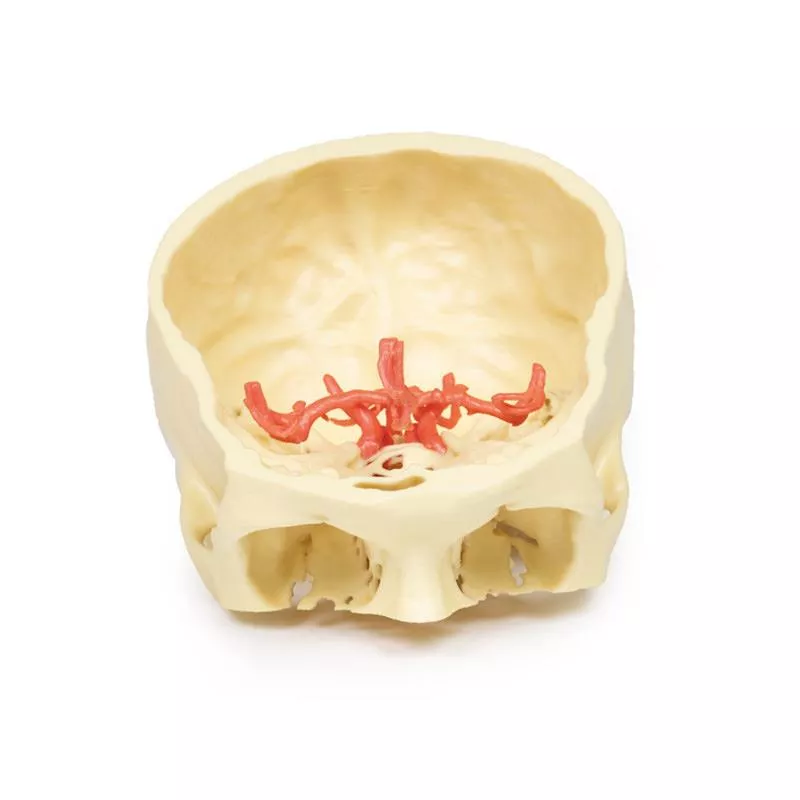Product information "Superficial Facial nerves & Parotid Gland"
This 3D model provides a detailed view of the superficial anatomy of the face and head, expanding upon our HW 44 model with a broader dissection of the scalp, occipital region, and areas below the external ear.
Key Features:
Extended Facial Anatomy
Includes the terminal branches of the facial nerve (CN VII) traced from the parotid gland, with the platysma muscle preserved and extending from the mandible to the neck.
Enhanced Posterior Dissection
- Broader exposure across the posterior scalp and occipital region
- Includes the retromandibular vein, great auricular nerve, and lesser occipital nerve
- Shows the course of the occipital artery and vein near the trapezius
Neurovascular Highlights
Improved visualization of the supraorbital, supratrochlear, and superficial temporal arteries and nerves
Musculature
Preserves fibers of the auricularis and occipitalis muscles, integrated into the epicranius (occipitofrontalis)
Key Features:
Extended Facial Anatomy
Includes the terminal branches of the facial nerve (CN VII) traced from the parotid gland, with the platysma muscle preserved and extending from the mandible to the neck.
Enhanced Posterior Dissection
- Broader exposure across the posterior scalp and occipital region
- Includes the retromandibular vein, great auricular nerve, and lesser occipital nerve
- Shows the course of the occipital artery and vein near the trapezius
Neurovascular Highlights
Improved visualization of the supraorbital, supratrochlear, and superficial temporal arteries and nerves
Musculature
Preserves fibers of the auricularis and occipitalis muscles, integrated into the epicranius (occipitofrontalis)
Erler-Zimmer
Erler-Zimmer GmbH & Co.KG
Hauptstrasse 27
77886 Lauf
Germany
info@erler-zimmer.de
Achtung! Medizinisches Ausbildungsmaterial, kein Spielzeug. Nicht geeignet für Personen unter 14 Jahren.
Attention! Medical training material, not a toy. Not suitable for persons under 14 years of age.





















